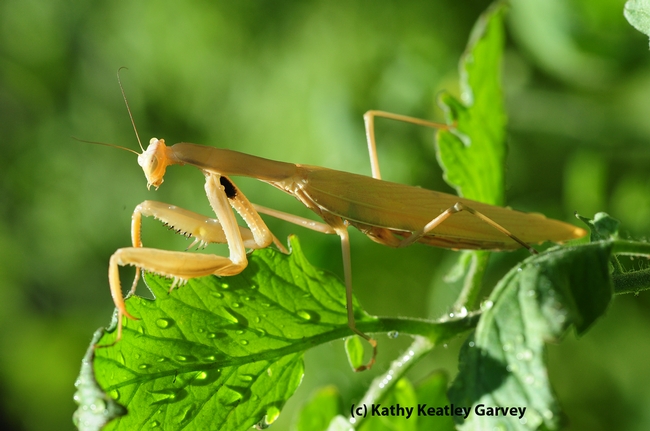So you want to capture an image of a praying mantis.
You have to find one first.
Sometimes it's a case of hide 'n seek--it hides, you seek.
Mantises, or mantids, are camouflaged. Many camouflaged (cryptic) insects are "sit-and-wait predators," write emeritus professors Penny Gullan and Peter Cranston of the University of California, Davis, in the fourth edition of their popular textbook, The Insects, An Outline of Entomology, published by Wiley-Blackwell.
"(Crypyic insects)...may be defensive, being directed against highly visual predators such as birds, rather than evolved to mislead invertebrate prey," they write. "Cryptic predators modeled on a feature that is of no interest to the prey (such as tree bark, lichen, a twig or even a stone) can be distinguished from those that model on a feature of some significance to prey, such as a flower that acts as an insect attractant."
But we inadvertently discovered there's at least one good way to flush out a praying mantis--water your garden. It will hurriedly emerge.
This praying mantis (below), lurking on a tomato plant, apparently didn't like the burst of water that disturbed its stakeout.
It licked the water droplets from its forelegs--legs specialized to seize prey--and then flew to a nearby tree.
Attached Images:


